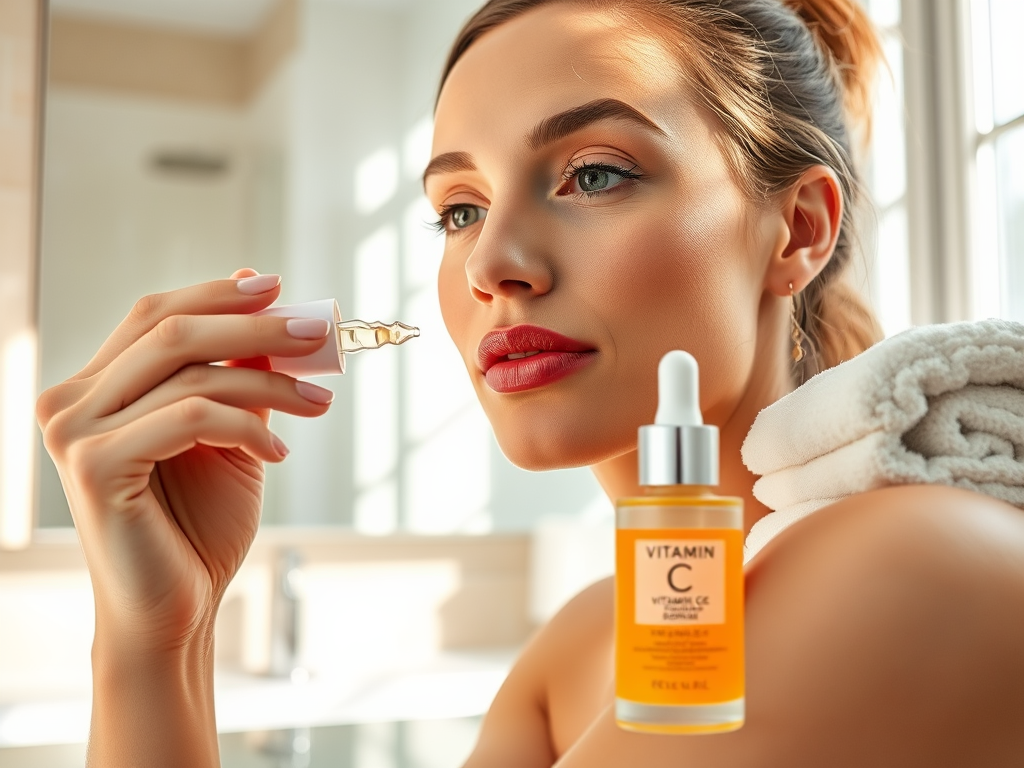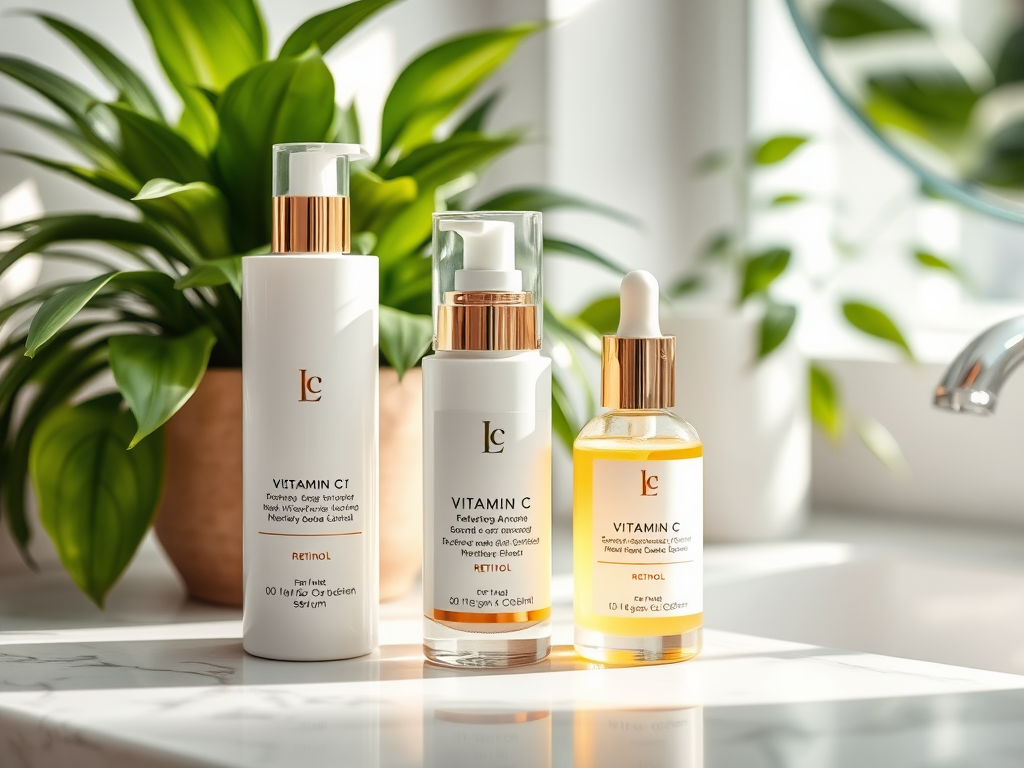The world of skincare is vast and often overwhelming, with countless ingredients vying for your attention. Among the most recommended are retinol, vitamin C, and hyaluronic acid—each hailed for their unique benefits. But a common question arises: Can these powerful components coexist in a single skincare routine without causing havoc on your skin? This article delves deep into the science and practicality of using these three potent ingredients together, exploring their benefits, safety considerations, and best practices for application. By the end, you’ll be equipped with the knowledge to make informed choices for your skincare routine.
Retinol, a derivative of vitamin A, is celebrated for its ability to renew and rejuvenate the skin. From minimizing fine lines to addressing issues like acne, retinol plays a vital role in transforming your complexion. Vitamin C, on the other hand, is a powerful antioxidant that protects the skin from oxidative stress while brightening the complexion and promoting collagen synthesis. Hyaluronic acid is an exceptional humectant, drawing moisture into the skin and helping to maintain hydration levels. Together, they create a potent trio that can significantly enhance skin health when used properly.
Understanding Retinol, Vitamin C, and Hyaluronic Acid

The Role of Retinol
Retinol is one of the most researched skincare ingredients available today, known for its remarkable effects on the skin. By accelerating cell turnover, retinol helps to reduce the appearance of fine lines and wrinkles. It can also assist in diminishing hyperpigmentation and improving skin texture for a smoother overall appearance. Although extremely effective, it is critical to introduce retinol into your routine gradually, as it can cause initial irritation or dryness. Most dermatologists recommend starting with a lower concentration and increasing usage as your skin adjusts. Pairing it correctly with other ingredients is equally important for optimal results.
Benefits of Vitamin C
Vitamin C is a superstar ingredient often recommended by dermatologists for its multifaceted benefits. This vitamin acts as an antioxidant, neutralizing free radicals that contribute to aging and skin damage. Regular use can brighten the skin, resulting in a more radiant and youthful appearance. Additionally, vitamin C aids in collagen production, an essential protein that keeps skin firm and elastic. Its ability to reduce hyperpigmentation makes it a popular choice for those looking to achieve an even skin tone. To reap its full benefits, the timing and method of application matter significantly.
Importance of Hyaluronic Acid
Hyaluronic acid is a naturally occurring substance in the skin that has taken the skincare world by storm. Its primary function is to retain moisture; a single molecule of hyaluronic acid can hold up to 1,000 times its weight in water. This makes it an incredible hydrating agent, capable of plumping the skin and minimizing the appearance of fine lines. Hyaluronic acid helps to create a barrier that locks in moisture, making it ideal for all skin types, especially dry and dehydrated skin. Also, it can soothe and calm areas that experience irritation from other active ingredients.
Combining These Ingredients: The Science Behind It

The simultaneous use of retinol, vitamin C, and hyaluronic acid can deliver impressive results, but understanding their interaction is crucial. These ingredients can enhance one another’s effectiveness when applied correctly. The combination of retinol’s skin-renewing properties, vitamin C’s brightening capabilities, and hyaluronic acid’s hydrating effects creates a comprehensive skincare solution. However, applying them without regard to their unique characteristics may lead to adverse effects, especially for sensitive skin types.
| Ingredient | Benefits | Application Recommendations |
|---|---|---|
| Retinol | Reduces wrinkles, improves texture | Nightly, gradually increase usage |
| Vitamin C | Brightens skin, promotes collagen | Morning, on clean skin |
| Hyaluronic Acid | Hydrates, plumps skin | After vitamin C, morning or night |
Safety Considerations When Using Retinol, Vitamin C, and Hyaluronic Acid
Skin Sensitivity and Irritation
It’s essential to be cautious when introducing active ingredients into your skincare regimen, especially retinol and vitamin C. Both can lead to skin irritation, redness, or peeling, particularly for individuals with sensitive skin. To mitigate these risks, it’s advised to perform a patch test before fully integrating a new product. Gradual introduction—starting with 1-2 applications a week—can help your skin acclimate. Additionally, always listen to your skin; if irritation persists, reduce frequency until you find a balance.
Formulation Matters
The effectiveness of retinol, vitamin C, and hyaluronic acid can vary based on their formulations. pH levels play a crucial role; for instance, vitamin C typically thrives in a lower pH environment, while retinol functions optimally at a slightly higher pH. Combining products with incompatible pH levels can reduce their effectiveness or exacerbate irritation. Always check the labels and ensure that you use products designed to be layered together.
Best Practices for Layering Retinol, Vitamin C, and Hyaluronic Acid
Sequence of Application
To get the most out of your skincare routine, the order in which you apply retinol, vitamin C, and hyaluronic acid is paramount. Start with a clean face, applying vitamin C first to allow for optimal absorption. Following this, apply hyaluronic acid to seal in moisture. Lastly, incorporate retinol into your routine at night to promote cell turnover without the interference of light exposure. This layering technique maximizes their benefits while minimizing potential irritation.
Timing of Use
When it comes to timing, vitamin C is best utilized in the morning to capitalize on its protective antioxidant properties, which can guard against environmental damage throughout the day. In contrast, retinol should ideally be used at night because it can increase skin sensitivity to sunlight. Proper application of sunscreen during the day is crucial when using these potent active ingredients to safeguard your skin from potential UV damage.
Individual Skin Types
Understanding your skin type can significantly influence how effectively you can incorporate these ingredients into your routine. Those with oily skin may benefit from using retinol more frequently, while dry or sensitive skin types need to exercise caution and monitor for any signs of irritation. For combination skin, alternating the use of these ingredients can be beneficial. Always customize your skincare routine based on how your skin responds to each ingredient.
Conclusion
In conclusion, the combination of retinol, vitamin C, and hyaluronic acid can be a transformative approach to skincare when applied with care. Each ingredient brings unique benefits that, when integrated thoughtfully, can lead to vibrant, healthy skin. Understanding your skin type, the proper order of application, and the significance of formulations is vital to navigating this potent trio successfully. Ultimately, the right approach will empower you to achieve your skincare goals, enhancing your daily routine into a nourishing ritual.
Frequently Asked Questions
- Can I use retinol and vitamin C at the same time? No, it’s generally recommended to use them at different times (vitamin C in the morning and retinol at night) to minimize irritation.
- What should I apply first: hyaluronic acid or vitamin C? Apply vitamin C first to clean, dry skin, followed by hyaluronic acid to lock in moisture.
- Is it safe to use all three together every day? It depends on your skin type. Those with sensitive skin should introduce them gradually and monitor for irritation.
- How do I know if my skin can handle these ingredients? Start with lower concentrations and perform patch tests to gauge your skin’s response before incorporating them into your routine.



